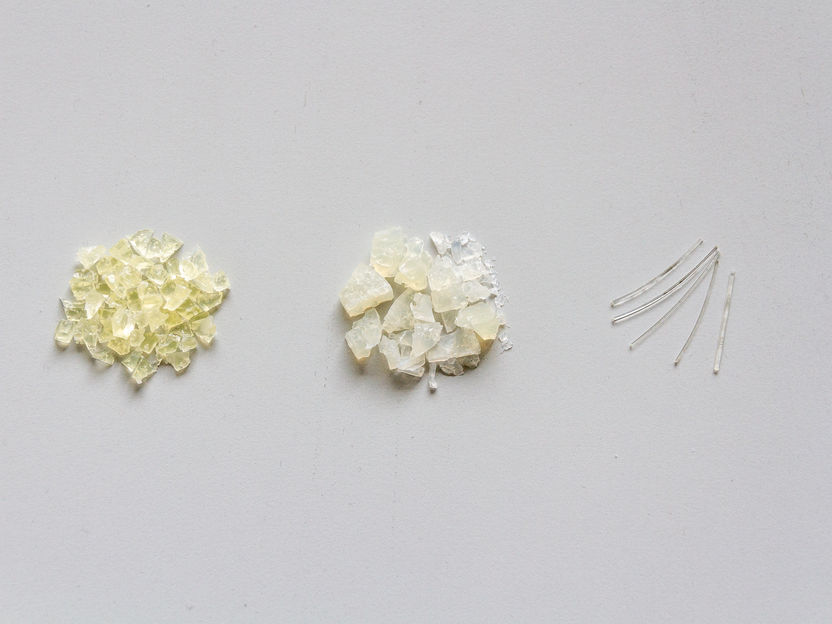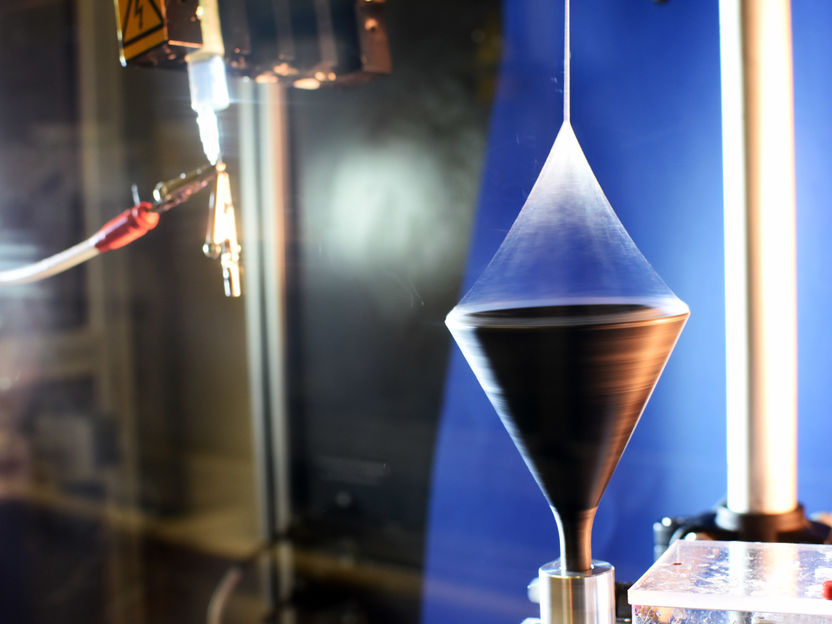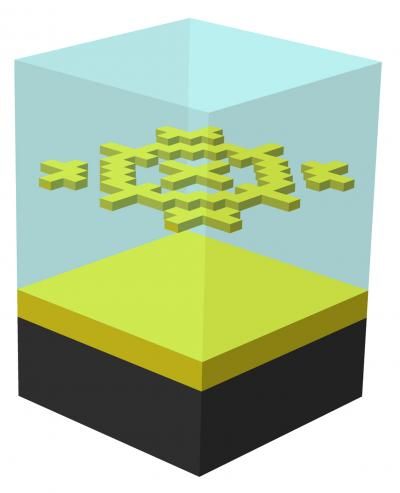The fluorescent fingerprint of plastics
LMU researchers have developed a new process which will greatly simplify the process of sorting plastics in recycling plants. The method enables automated identification of polymers, facilitating rapid separation of plastics for re-use.
A team of researchers led by ProfessorHeinz Langhalsof LMU’s Department of Chemistry has taken a significant step which promises to markedly expedite the recycling of plastic waste. They have developed a technique which provides for automated recognition of their polymer constituents, thus improving the efficiency of recycling and re-use of the various types of plastic. The technique takes advantage of the polymer-specific nature of the intrinsic fluorescence induced by photoexcitation. “Plastics emit fluorescent light when exposed to a briefflashof light, and the emission decays with time in a distinctive pattern. Thus, their fluorescence lifetimes are highly characteristic for the different types of polymers, and can serve as an identifying fingerprint,” Langhals explains. Details of the new method appear in the latest issue of the journal “Green and Sustainable Chemistry”.
The new technique, which is the subject of a patent application, involves exposing particles of plastic to a briefflashof light which causes the material to fluoresce. Photoelectric sensors then measure the intensity of the light emitted in response to the inducing photoexcitation to determine the dynamics of its decay. Because the different polymer materials used in the manufacture of plastics display specific fluorescence lifetimes, the form of the decay curve can be used to identify their chemical nature. “With this process, errors in measurement are practically ruled out; for any given material, one will always obtain the same value for the fluorescence half-life, just as in the case of radioactive decay,” says Langhals.
Turning bottles into windcheaters
Unlike metals, the quality of which often suffers during the recycling process itself, recycled plastics can be processed quite efficiently. “Polymers represent an interesting basis for the sustainable cycling of technological materials. The crucial requirement is that the recycled material should be chemically pure. In that case, bottles made of PET, for example, can be relatively easily turned into synthetic fiber for use in waterproof windcheaters,” says Langhals.
The vast majority of technical polymers are processed as thermoplastics, i.e., they are melted at high temperature and the finished article is produced by injecting the molten material into an appropriate mold, where it allowed to set. Reheating of recycled plastic can, however, lead to deleterious alterations in its properties of the material unless the sorted material is of high purity. Contamination levels as low as 5% are sufficient to significantly reduce the quality of the reformed product. The reason for this “down-cycling” effect is that, as a general rule, polymers tend to be immiscible, as they are chemically incompatible with one another. Remelting of polymer mixtures therefore often leads to partitioning of the different polymers into distinct domains separated by grain boundaries, which compromises the quality of the final product. For this reason, high-quality plastics are always manufactured exclusively from pristine precursors – never from recycled material.
The new method developed by the LMU team could, however, change this. “The waste problem can only be solved by chemical means, and our process can make a significant contribution to environmental protection, because it makes automated sorting feasible,” says Langhals. Indeed, the use of fluorescence lifetime measurements permits the identification and sorting of up to 1.5 tons of plastic per hour. In other words, the method in its present form already meets the specifications required for its application on an industrial scale.
Original publication
Heinz Langhals, Dominik Zgela, Thorben Schlücker: „High Performance Recycling of Polymers by Means of Their Fluorescence Lifetimes“ In: Green and Sustainable Chemistry, 2014
Original publication
Heinz Langhals, Dominik Zgela, Thorben Schlücker: „High Performance Recycling of Polymers by Means of Their Fluorescence Lifetimes“ In: Green and Sustainable Chemistry, 2014
Topics
Organizations
Other news from the department science
These products might interest you

Eclipse by Wyatt Technology
FFF-MALS system for separation and characterization of macromolecules and nanoparticles
The latest and most innovative FFF system designed for highest usability, robustness and data quality

HYPERION II by Bruker
FT-IR and IR laser imaging (QCL) microscope for research and development
Analyze macroscopic samples with microscopic resolution (5 µm) in seconds

Get the chemical industry in your inbox
By submitting this form you agree that LUMITOS AG will send you the newsletter(s) selected above by email. Your data will not be passed on to third parties. Your data will be stored and processed in accordance with our data protection regulations. LUMITOS may contact you by email for the purpose of advertising or market and opinion surveys. You can revoke your consent at any time without giving reasons to LUMITOS AG, Ernst-Augustin-Str. 2, 12489 Berlin, Germany or by e-mail at revoke@lumitos.com with effect for the future. In addition, each email contains a link to unsubscribe from the corresponding newsletter.
Most read news
More news from our other portals
Last viewed contents

Polyamides from terpenes - New biobased class of polyamides

Berufsgenossenschaft Rohstoffe und chemische Industrie (BG RCI) - Bochum, Germany

Light, strong, and tough: Researchers discover unique polymer fibres

Sartorius Campus expands: Official opening of the new manufacturing facility for laboratory instruments - The largest single investment of Sartorius Campus totaling around 42 million euros

Perovskites, a ‘dirt cheap’ alternative to silicon, just got a lot more efficient - Researchers use substrates of metal and dielectrics to boost the light conversion efficiency of perovskites by 250 percent

Genetic approach helps design broadband metamaterial




























































